The Grenfell Street Power Station was operated by the South Australia Electric Light and Motive Power Company between 1901 and 1904. Incorporated in 1895, the company was the first to supply public electricity to Adelaide, and responsible for powering the city’s electric tramway system. In 1904, ownership of the power station transferred to the Adelaide Electric Supply Company, which operated at the site until 1925. After functioning as a TAFE venue, the former power station building now houses Tandanya, Australia’s National Aboriginal Cultural Institute.
Origins
Designed by British engineer F.W.H. Wheadon, the Grenfell Street Power Station was constructed to meet burgeoning demand for electricity in the Adelaide metropolitan area. A smaller power station had been constructed in 1897 at the corner of St. Vincent and Lispson Streets in Port Adelaide, but was plagued from the beginning by inefficient generating equipment and the poor quality of its single underground transmitting cable. Through his connections with British electrical companies and investors, Wheadon facilitated the purchase of South Australia’s fledgling electrical enterprise by the English Brush Electrical Engineering Company and Electric Light and Traction Company of Australia. By the turn of the century, the South Australia Electric Light and Motive Power Company had secured a contract with the City of Adelaide to supply power for street lighting on King William Street. The contract also allowed the company to provide electricity to private customers, and pre-orders for the service quickly exceeded existing capacity.
Operation and Expansion
In order to meet anticipated demand, Wheadon drew up plans for a new power station to be located within the city at the intersection of Grenfell Street and East Terrace. The main building was designed by architect Alfred Wells and constructed by N.W. Trudgeon at a cost of £4325. In an effort to meet the company’s obligations to the City of Adelaide during its construction, a temporary generating plant was assembled in a shed at the corner of Tam O’ Shanter Place and Devonshire Place. The Grenfell Street Power Station opened to considerable fanfare on 19 November 1901, and was soon distributing 400 kilowatts of electricity from its network of coal-fired boilers, steam generators and a Direct Current (DC) generating plant. A series of underground and overhead cables transmitted power from the station to customers throughout the city.
Despite faults associated with the development of Adelaide’s electrical grid, the Grenfell Street Power Station was soon supplying power to the city’s suburbs, outlying townships, and expanding tramway system. The network’s original reliance on DC electricity was replaced by an Alternating Current (AC) system that utilised transformers to boost voltage levels and transmit power over increasingly greater distances. North Adelaide became the first suburban recipient of AC electricity in 1902, and was followed over the course of the next decade by Norwood, Unley, Hindmarsh and Thebarton. Three years later, a new company—the Adelaide Electric Supply Company—assumed control of the metropolitan area’s electricity supply, and responsibility for meeting customer demand.
As the city’s expectations for electricity increased, so too did the need to modify and expand the Grenfell Street Power Station to generate greater output. In 1912, the original single-storey structure was replaced by a two-storey building that—in addition to its role as a powerhouse—contained administrative offices, a laboratory, and an instrument test room. It also housed the company’s communication systems, switchboard, and meter accounts. Ultimately, the power station complex was further supplemented by the addition of ten Babcock & Wilcox boilers, two brick chimneys, eight cooling towers, a variety of reciprocal and turbine-driven AC and DC generators, and several DC-to-AC motor generator sets.
Decline and Closure
By 1917, the Grenfell Street Power Station’s output had increased to over 12 000 kilowatts as a consequence of customer demand. Wheadon and executives at Adelaide Electric Supply Company realised that the power station’s ability to safely and efficiently transmit electricity would soon be eclipsed by the expectations placed upon it. The power station faced other obstacles as well: as output demand increased, significant deficiencies in the supply of both coal and turbine condenser cooling water were encountered, as were problems with coal storage and ash handling and disposal. As a consequence, the company selected a more suitable, less populated site for a new power station on the Port River at Osborne. However, the outbreak of the First World War delayed construction of the facility until 1918. With the commissioning of the Osborne ‘A’ Power Station in August 1923, the powerhouse at Grenfell Street quickly slid into obsolescence and finally ceased operations two years later.
Tandanya
In the wake of Grenfell Street Power Station’s closure, the main administrative/powerhouse building remained in possession of the Adelaide Electric Supply Company. Control of this and all other company assets was ultimately transferred to the Electricity Trust of South Australia (ETSA) in 1946. The building then functioned as a Panorama TAFE School for a period of time.
In 1989, the former Grenfell Street Power Station became home to Tandanya, Australia’s National Aboriginal Cultural Institute, and the nation’s oldest Aboriginal-owned and operated culture centre. Tandanya is a word in the Kaurna language that means ‘Red Kangaroo Place’. The building is located on Kaurna land and lies within the traditional location of the Red Kangaroo Ceremony, which is connected to Red Kangaroo Dreaming. Tandanya is a non-profit organisation governed by a 10-member Aboriginal Board and supported by both the State Government of South Australia and the Australian Federal Government. It is recognised as Australia’s leading Aboriginal and Torres Strait Islander multi-arts and cultural venue, and has successfully promoted reconciliation with, and understanding of, Aboriginal and Torres Strait Islander peoples via exhibitions and performances that feature artistic expression, participation and interaction.


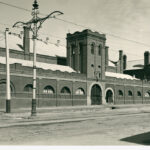

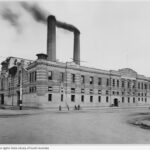
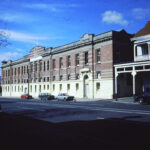
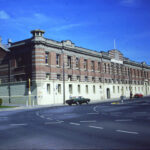
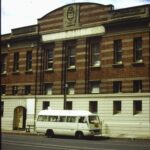
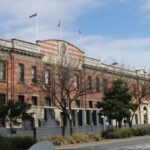
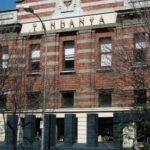

Comments